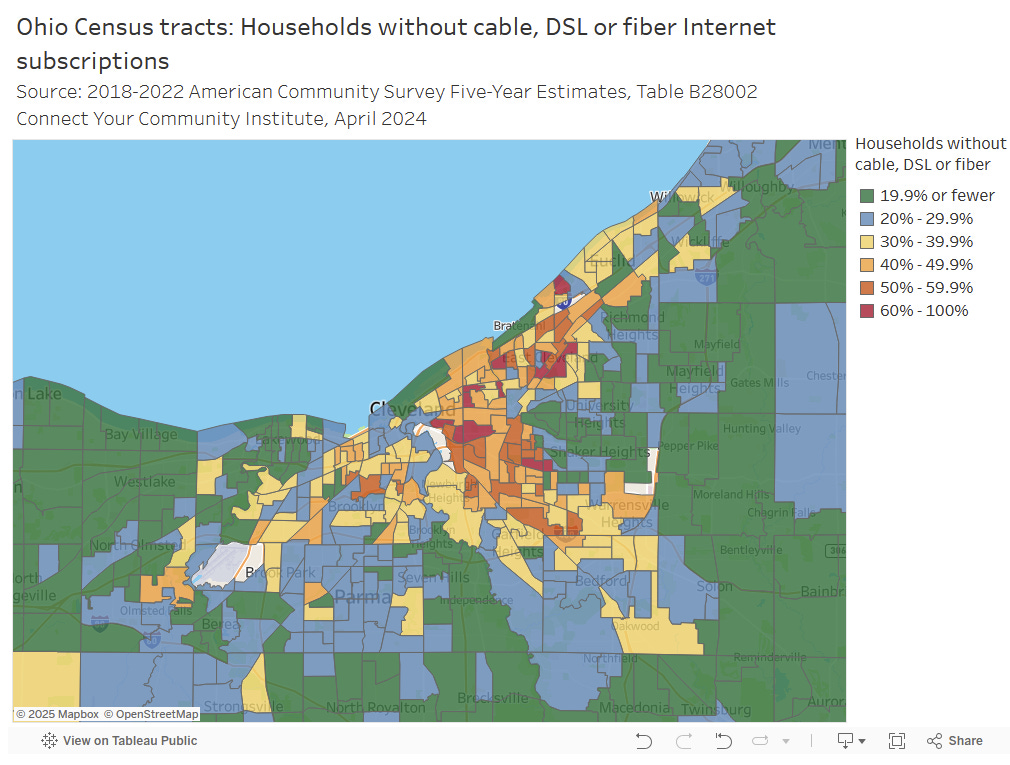It’s not every day that Ohio politicians publicly share good policy ideas; however, Kris Harsh (D - CLE13) did just that when providing comment on the state of the City’s relationship with DigitalC for the use of ARPA funds to expand broadband access. We agree with Kris and hope others will too. Let’s talk about it.
Cleveland’s Public Utilities
The history of the City of Cleveland is the history of industrialization, White Flight, and urban decay, but for all its faults, this city has been at the forefront of many progressive policy issues over the years. In a GOP-dominated state where the population votes about 50:50 in gubernatorial races, it should be no surprise that many progressive issues will be stamped out at the local level before they become appealing and state politicians are forced to consider them. In many areas, this has been the trend, and the City of Cleveland is a known catalyst for GOP outrage.
One area where Cleveland has managed to retain its progressive, labor-focused past is with its city-owned utilities: the Division of Water and Cleveland Public Power.
The Legacy of Tom Johnson
When you think of Cleveland, chances are, you’re thinking of the legacy of Mayor Tom Johnson, whether you know it or not. Tom Johnson was Mayor of Cleveland from 1901 to 1909 and, in that time, paved the roads, built parks and baseball fields, began a street cleaning crew, cleaned up the Water Department, built the West Side Market, created the first modern building code, built the Cooley Farms, began the fight for municipal home rule, began construction of The Mall, and founded the Cleveland Railway Co. (Municipal Traction Company) and the Municipal Light and Power Company (Muny Light, now Cleveland Public Power).
Many things have come and gone in the history of Cleveland, and many things will continue to come and go. But the legacy of Tom Johnson is a foundational aspect of what this city was at its height and a vision for what it could be once again.
The Poorest Major American City
This city goes by many names, and unfortunately, this is one of them. The reality of life in this city for lifelong Clevelanders is one of economic and socio-cultural hardship driven by gentrification, deteriorating living conditions, a loss of working class jobs, and systemic oppression dating back to this city’s founding.
As society continues to move towards a technocratic organization of the economy, more jobs will be lost due to corporate greed, and the bar for entry into traditionally lower-level jobs will only increase, which fuels a cycle of oppression for Cleveland’s most vulnerable. Combatting this trend, and many others like it, will require a concerted effort by local government to alleviate its residents’ living conditions and provide residents with high-quality, well-paying, and humane working opportunities.

One component of an inclusive economic future for the City of Cleveland and its residents is reliable access to high-speed internet on demand within residents’ homes. However, Cleveland’s digital divide is stark. Some institutions like the Cleveland and Cuyahoga County Public Libraries provide residents with access to books, media, and the internet free-of-charge - but their resources are limited, and the ability of every resident to rely on those services is uncertain because life happens.
We don’t think that having clean drinking water from the tap or indoor plumbing are luxuries, so why is high-speed internet?
What is to be Done?
We don’t agree with Councilman Harsh on everything, but we can certainly agree on one thing: Cleveland needs a municipal ISP offering reliable, high-quality internet service to Cleveland residents at an affordable, income-adjusted rate.
Without municipal ownership of public utilities, corporations will further disenfranchise everyday Clevelanders through wage theft, exploitation, and price gouging. Access to digital resources, just like access to physical ones, is a basic right, and we must treat it that way. Municipal utilities bring our future back into our hands.
Subscribe now for Ohio hot takes from the left. Visit our website for more info at neoleft.org. Keep up with our social media antics on Twitter and TikTok.



